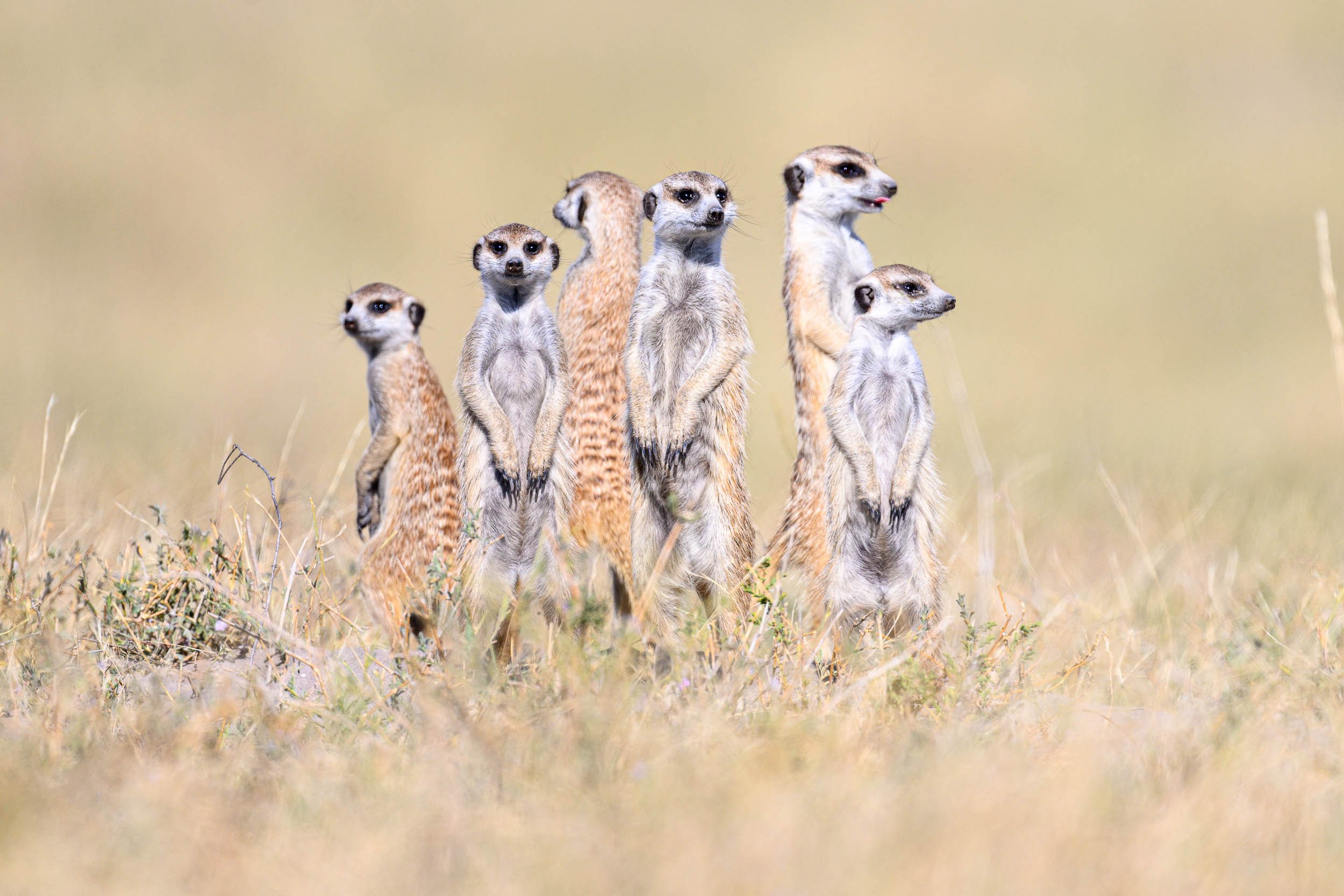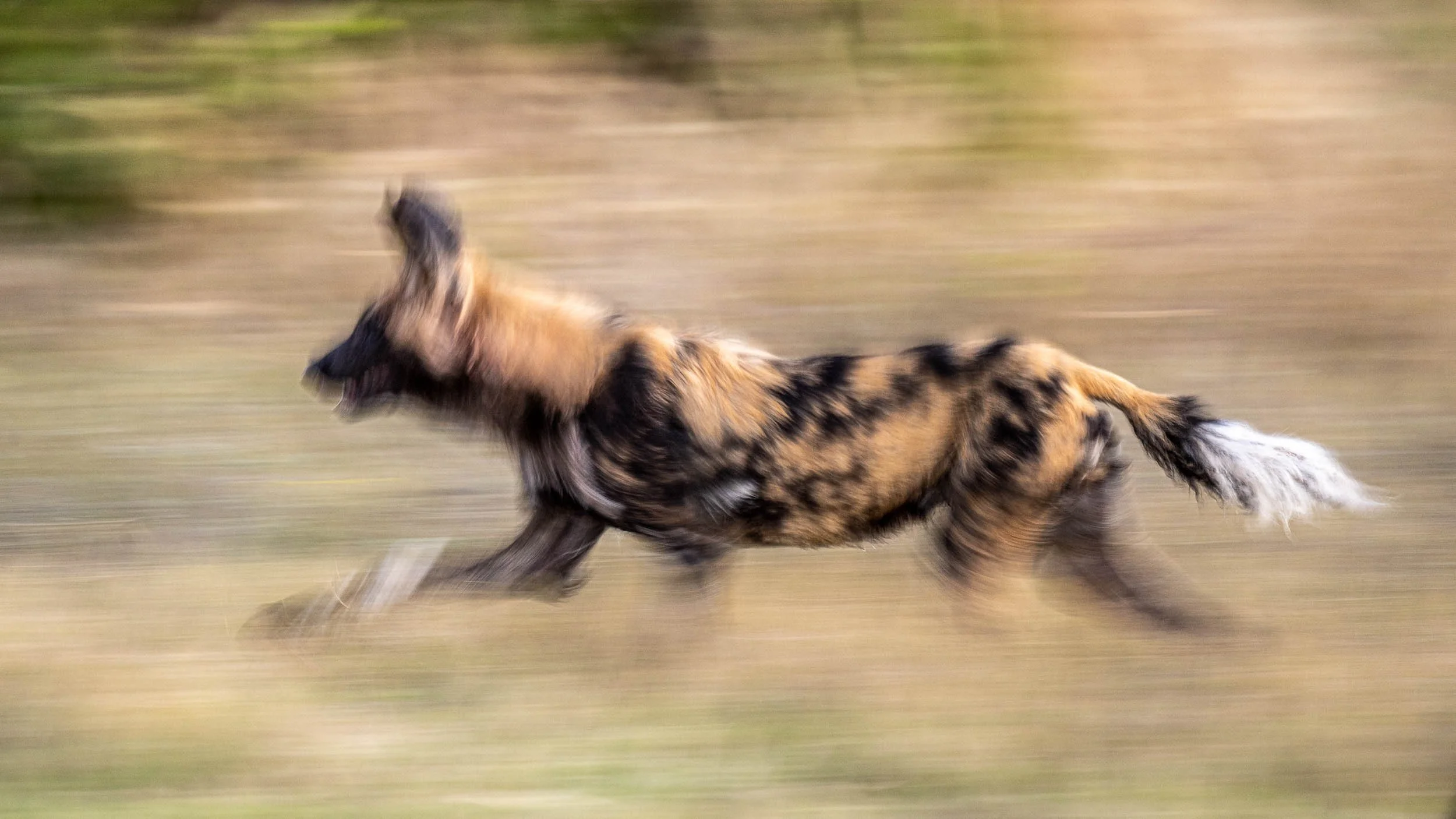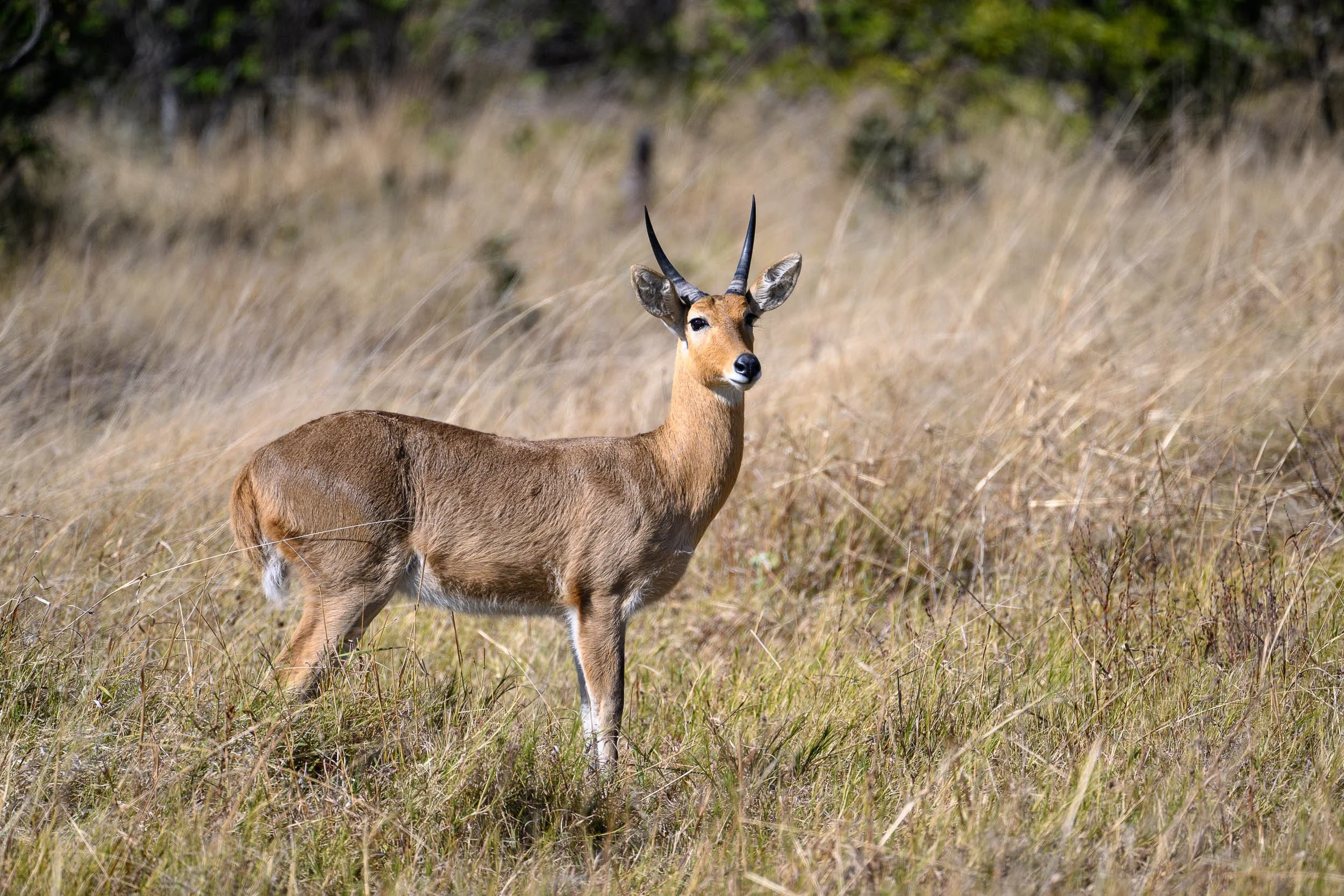Review of the Nikon Z9, 800 Z and 100-400 Z on Safari in Botswana
Meerkats - Nikon NIKKOR Z 800mm f/6.3 VR S Lens
I recently returned from an extended trip in Botswana where I had a lot of time to familiarize myself with the Nikon Z9, 800 Z and 100-400 lenses. Nikon helped me get the 800 Z in time for this trip for which I’m extremely grateful. The TLDR version of this trip report is as follows: I can without hesitation recommend each of these products for a variety of wildlife work. For the more detailed trip report, please read on below and feel free to drop any questions in the comments. Please note, this gear was purchased with my own funds, and my review is not commissioned in any way.
Lion cub - Nikon NIKKOR Z 100-400mm f/4.5-5.6 VR S Lens
Botswana, home of the Kalahari and Okavango Delta
Botswana is a fascinating country with incredible biodiversity, including many rare or endemic mammals, birds, and other wildlife. It is bigger than my large home state of California but with a comparatively tiny population and lots of protected open space. The country is mostly a desert, with extremely dry climate, but unlike some deserts, is covered with scrub, grassland, and trees. For this trip, we focused primarily on the Okavango delta region, a wetland towards the north end of the country which provides a water and food source for wildlife when the surrounding areas become parched during the dry season.
Okavango delta - Nikon NIKKOR Z 100-400mm f/4.5-5.6 VR S Lens
Initially, I was thinking 800 would be too much focal length for a lot of Botswana’s larger mammal subjects. In reality, it ended up being a fantastic focal length to work with, especially for skittish animals and birds. For several of the mammals, there were times I found myself instinctively framing the photos differently including shooting in portrait orientation. Other times, having the power a handheld 800 was an amazing experience, since the old adage applies that sometimes there is never enough reach for wildlife. Often times the 800 focal length had me attempting photo opportunities I’d otherwise pass up on with shorter focal lengths. For the times where 800 was too much, the 100-400 proved an asset. Overall, this was a nice, relatively compact and lightweight pairing for a safari. These traits are becoming ever-important with strict airline carry-on baggage restrictions.
Jackal - Nikon NIKKOR Z 800mm F/6.3 VR S Lens
Elephant - Nikon NIKKOR Z 100-400mm F/5.6-6.3 VR S Lens
Elephant - Nikon NIKKOR Z 800mm F/6.3 VR S Lens
Photographing the African Wild Dogs with the Z9
Finding the rare and elusive African wild dog (they just call them wild dogs there ;-) was a dream of mine that finally came true on this trip, and though it was never assured to see them, the stars aligned and provided not only good sightings but also some decent photo ops too. I was initially a bit concerned that shooting with F/5.6 on the 100-400 or F/6.3 on the 800 in low light conditions, but it turns out low-light AF and noise was never a major issue and that I could rely on the Z9 and these lenses in all conditions - including the low light of dusk and dawn.
Wild dog - Nikon NIKKOR Z 800mm F/6.3 VR S Lens
The dogs have fascinating pack mentality which includes an alpha female who tends to the den and pups, and the rest of the pack who hunts then returns to the den in a support role. The dogs have an uncanny ability to communicate with and respond to one another which includes both visual and audible cues. The tight-knit functioning of the pack It makes them seem more like an individual unit versus a group of self-guided animals. Everything revolves around the pack. The dogs hunting style is covering a large area scattering the herd, honing in on an individual, exhausting it, and then picking apart the animal bit by bit - even while it’s still moving. Once the animal succumbs, it is destroyed by the dogs almost instantly in a feeding frenzy, and then the dogs return to the den to regurgitate the spoils for the alpha female and/or pups. Nature can be cruel, but also fascinating at the same time. Some of these things are tough to stomach, and you never now how you are going to react until it happens in front of you.
Field notes about the lens selection
Having the ability to zoom with the dogs was important, and thus the 100-400 was probably the most useful optic for these moments. With the 100-400, I found the resulting images much more pleasing than I ever expected out of a variable aperture zoom. Although it can be highly subjective and difficult to spot differences between equivalent types of lenses across systems, these Nikon Z lenses seem to have a unique optical quality that goes beyond pure critical sharpness. What I found most impressive was the way the lenses rendered foliage and out of focus backgrounds, seeming much more “prime-like” than I would expect from a variable-aperture zoom. It reminds me of looking through a set of high quality binoculars that have a very flat field, which in turn provide and sort of a layered 3-dimensional effect. This was especially evident to me in 5th and 6th photos below. Needless to say, I was extremely very pleased with the out of focus rendering of both lenses, despite not being a bright aperture F/2.8 or F/4.0 prime. There were times that I expected the background bokeh to be busy and offensive, and that simply wasn’t the case the majority of the time.
I walked away with essentially no significant complaints about the 100-400 lens. It’s simply a fantastic optic that is exceptionally versatile, reasonably lightweight, and produces better quality images than I would have expected.
The 800, like the 300 PF and 500 PF lenses before it, offers something truly unique and special - a handheld optic that gives up little to conventional telephoto prime lenses but in a much smaller and lighter package. While not a cheap lens by any stretch, I’m glad Nikon struck the balance here of mid-tier price and exceptionally high quality, versus a “budget” option (e.g., Canon 800 F/11) which would make something like a 200-600 zoom more appealing to me, personally.
I was equally impressed with the stabilization of the rig, especially shooting an 800mm lens handheld at slow shutter speeds. My mind told me it should be a futile experience, but the reality is I shot the 800 handheld 95% of the time and the stabilization was rock-solid.
Really the only thing I didn’t like about the is the 800 was the lens hood. I found the twist-on type hood would get too easily gummed up with grit and dirt. I would have preferred the typical screw-on type hood that you see on the 400/2.8 Z and older Nikkor telephoto lenses, but my guess is this design was chosen to save costs and meet the price point.
Below is a series of images taken with the dogs:
Wild dog - Nikon NIKKOR Z 100-400mm F/5.6-6.3 VR S Lens
Wild dog - Nikon NIKKOR Z 800mm F/6.3 VR S Lens
Wild dog - Nikon NIKKOR Z 800mm F/6.3 VR S Lens
Wild dog - Nikon NIKKOR Z 100-400mm F/5.6-6.3 VR S Lens
Wild dog - Nikon NIKKOR Z 800mm F/6.3 VR S Lens
Wild dog - Nikon NIKKOR Z 800mm F/6.3 VR S Lens
Wild dog - Nikon NIKKOR Z 800mm F/6.3 VR S Lens
Wild dog - Nikon NIKKOR Z 100-400mm F/5.6-6.3 VR S Lens
Wild dog - Nikon NIKKOR Z 800mm F/6.3 VR S Lens
Wild dog - Nikon NIKKOR Z 800mm F/6.3 VR S Lens
Impressions of the Z9 for wildlife work
Much like the lenses, I walked away from the Safari feeling even more impressed with the Z9. Despite having used and appreciating certain traits of the Z7, Z7II, I never felt that the cameras were optimized for wildlife work, and for me, neither could touch the D850 for that use case.
The Z9 has changed that calculus completely, and is in my view, simply a better camera for wildlife in nearly every way. While I was already familiar with the Z9, I felt I finally had an opportunity to give the camera a proper workout day in and day out on this trip. I can now say without hesitation that it is an incredible tool and my current favorite for this use case. Standout pros for me include reliable AF subject detection, consistent and repeatable AF performance, blur-free and blackout free EVF, and an almost infinite buffer when shooting in High Efficiency* Raw. The other major pro I experienced on this trip was the battery life. With the Z9, I could sometimes go two or three days without replenishing the battery.
For this trip, I almost exclusively used the fastest (20 FPS) burst mode, as I often do with cameras to ensure that I’m not only capturing the best moment but also choosing the sharpest exposures. I’ll often shoot the series of identical images only to select the sharpest. After a couple days, I quickly realized after culling photo after photo that the Z9 simply nails the autofocus most of the time and taking so many photos is often not necessary if the settings used stay the same.
One of the latest firmware updates introduced enhancements to the “custom recall function” which I use to toggle between single point AF and all-area subject detection. One thing that surprised me about the Z9, was I found I could often rely on subject detection with all-area AF versus limiting the focusing area to wide area-L or wide-area-S. On some other cameras, I've had to limit the focusing area to avoid false detections of the background. More times than not, the Z9 simply grabs the intended subject. For all of the other critical moments, I rely on single point focus, which I found to be dead accurate. My experience was that these two focus modes - Auto area AF with subject detection and single point AF - covered about 99% of my needs.
As for cons to report, I do not have many at this time. I still do not love the way that Nikon handles custom shooting banks, with no ability for the user to “save settings” such that one can revert to the original settings after adjustment. I still want to be able to toggle animal subject detection AF off and on using a FN button, which is currently not possible due to a bug. Other than these two small issues, I’ve been nothing but impressed.
Closing thoughts
For anyone who has read my entries before, they may know that I currently use a few different camera systems (currently Fuji, Olympus and Nikon), but I walked away from this trip with profound respect and appreciation of what the Z9 can do, and in addition, what the Z lenses are capable of. My experiences on this trip made me very excited about the future of the Z system for the wildlife shooter. What is personally so appealing to me is that Nikon is planning to give the wildlife enthusiast and pro many options - one can choose the lens for the job based on light gathering, weight, zoom, size, and cost. The fact that a 400 PF, 200-600 and 600/4 are all on the way soon, demonstrates Nikon is very serious about sports and wildlife shooters using the Z system. Soon, one will be able to choose wildlife-suitable optics at the budget, mid-range, and high-end price points.
There are still some firmware tweaks I’d like to see on the Z9 that I’ve discussed in prior posts and also submitted to Nikon, and although I’d like to see a smaller “D850 equivalent” un-gripped mirrorless body sooner than later, I can without hesitation recommend the Z system and these lenses. Although many cameras today have approached a level of excellence that makes them easy to recommend, the Z9 is probably the first camera that I’ve felt mostly gets out of the way of the photographic experience and is only limited by me, the operator, making conscious decisions about the best framing, light conditions, settings that will hopefully lead to good results. There’s no real “gotcha” thing, like the D850’s less than stellar live view mode, or the Z6/Z7’s delayed slideshow stutter in high speed continuous shooting. The kit has so far proven very reliable even in with demanding conditions and subjects, and with generous firmware updates seems to only be getting better with time.
Heron - Nikon NIKKOR Z 800mm F/6.3 VR S Lens
Saddle billed stork - Nikon NIKKOR Z 800mm F/6.3 VR S Lens
Lion - Nikon NIKKOR Z 800mm F/6.3 VR S Lens
Lion - Nikon NIKKOR Z 800mm F/6.3 VR S Lens
Reed buck - Nikon NIKKOR Z 800mm F/6.3 VR S Lens
Impalas - Nikon NIKKOR Z 800mm F/6.3 VR S Lens























